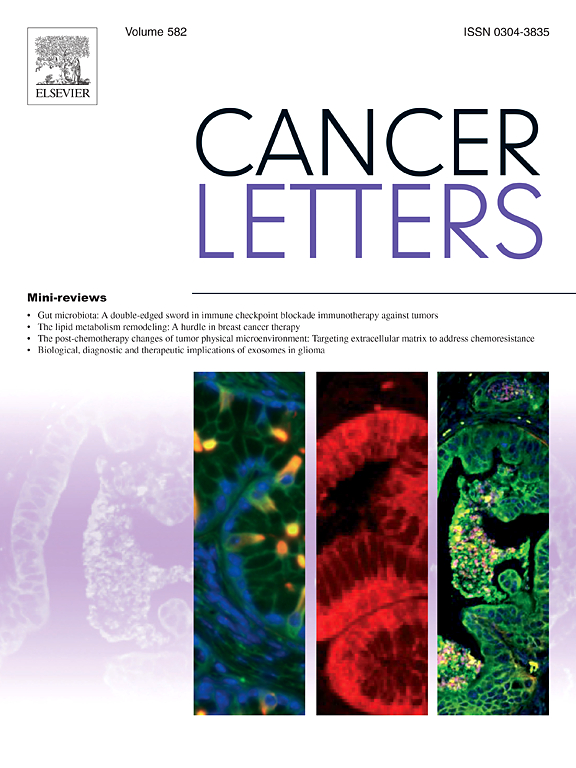EBF1-induced CSRP2 boosts the progression of B-cell acute lymphocytic leukemia by inhibiting ferroptosis
IF 9.1
1区 医学
Q1 ONCOLOGY
引用次数: 0
Abstract
B-cell acute lymphocytic leukemia (B-ALL) is a highly aggressive malignancy with poor prognosis. Developing diagnostic markers and therapeutic targets to identify and treat B-ALL early would improve the outcomes of B-ALL patients. Here, we conducted RNA next-generation sequencing using bone marrow (BM) specimens obtained from 7 B-ALL patients and 7 healthy donors. We found cysteine and glycine-rich protein 2 (CSRP2) upregulated in B-ALL. Down-regulation of CSRP2 resulted in suppressed cell proliferation and enhanced cell apoptosis in B-ALL. In addition, inhibition of CSRP2 increased cell ferroptosis in B-ALL cells. Mechanically, we revealed that transcription factor early B cell factor 1 (EBF1) regulated CSRP2 levels in B-ALL, and inhibition of EBF1 decreased CSRP2 levels in B-ALL. In conclusion, the dysregulation EBF1 led to CSRP2 upregulation and resulting in progression of B-ALL. The EBF1/CSRP2 axis could be of great potential as therapeutic targets for B-ALL treatment.
求助全文
约1分钟内获得全文
求助全文
来源期刊

Cancer letters
医学-肿瘤学
CiteScore
17.70
自引率
2.10%
发文量
427
审稿时长
15 days
期刊介绍:
Cancer Letters is a reputable international journal that serves as a platform for significant and original contributions in cancer research. The journal welcomes both full-length articles and Mini Reviews in the wide-ranging field of basic and translational oncology. Furthermore, it frequently presents Special Issues that shed light on current and topical areas in cancer research.
Cancer Letters is highly interested in various fundamental aspects that can cater to a diverse readership. These areas include the molecular genetics and cell biology of cancer, radiation biology, molecular pathology, hormones and cancer, viral oncology, metastasis, and chemoprevention. The journal actively focuses on experimental therapeutics, particularly the advancement of targeted therapies for personalized cancer medicine, such as metronomic chemotherapy.
By publishing groundbreaking research and promoting advancements in cancer treatments, Cancer Letters aims to actively contribute to the fight against cancer and the improvement of patient outcomes.
 求助内容:
求助内容: 应助结果提醒方式:
应助结果提醒方式:


